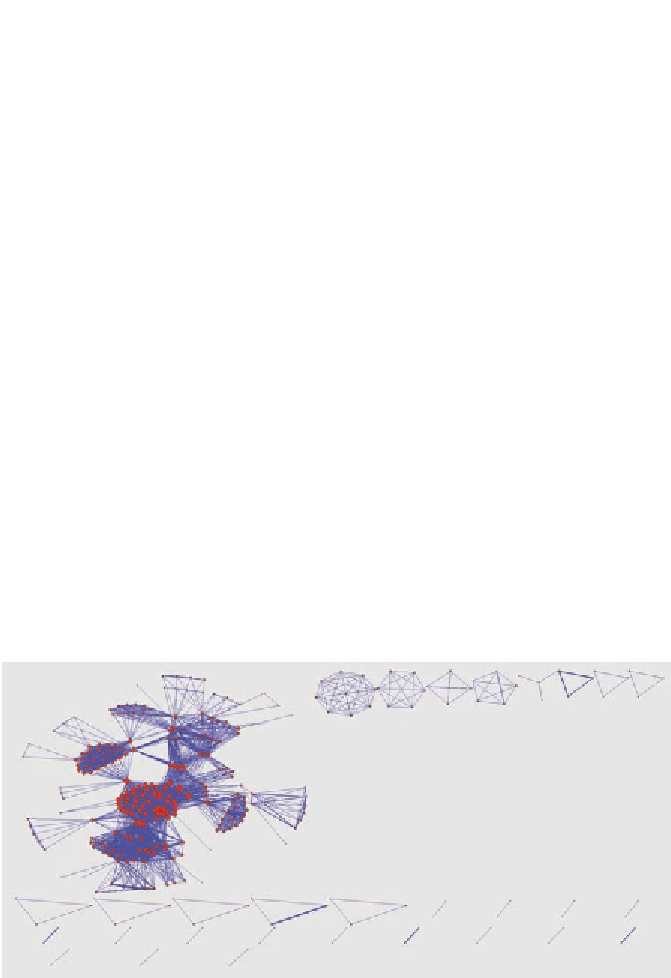Information Technology Reference
In-Depth Information
From the dataset, we seek to identify (1) frequently used
services and (2) workflows that invoke more services. We, therefore,
configure Pajek such that node size represents its degree centrality or
popularity—that is, the larger a node is, the more nodes it connects to.
The larger circles in Figure 8.6 imply that more workflows use the
services; the larger diamonds imply that the workflows use more
services.
Relation W
In the social network analysis, a
clique
[223] is a maximal complete
subgraph of three or more nodes, all of which are directly connected to
one another. It usually represents an interest group whose members tend
to have more homogeneous opinions and share more common traits. In
workflow-workflow relation
W
, two workflows (nodes) are connected
if they invoke common services. Therefore, a clique in
W
refers to a
group of workflows that invoke common services. In other words, the
group of workflows comprising a clique may share some common goals
or requirements.
Figure 8.8 is a visualization of
W
wherein each node represents a
workflow, the node's size connotes the number of services used, and
the thickness of an edge indicates the number of services shared by the
Figure 8.8
Visualization of workflow-workflow relation W. The dense areas indicate
cliques.

